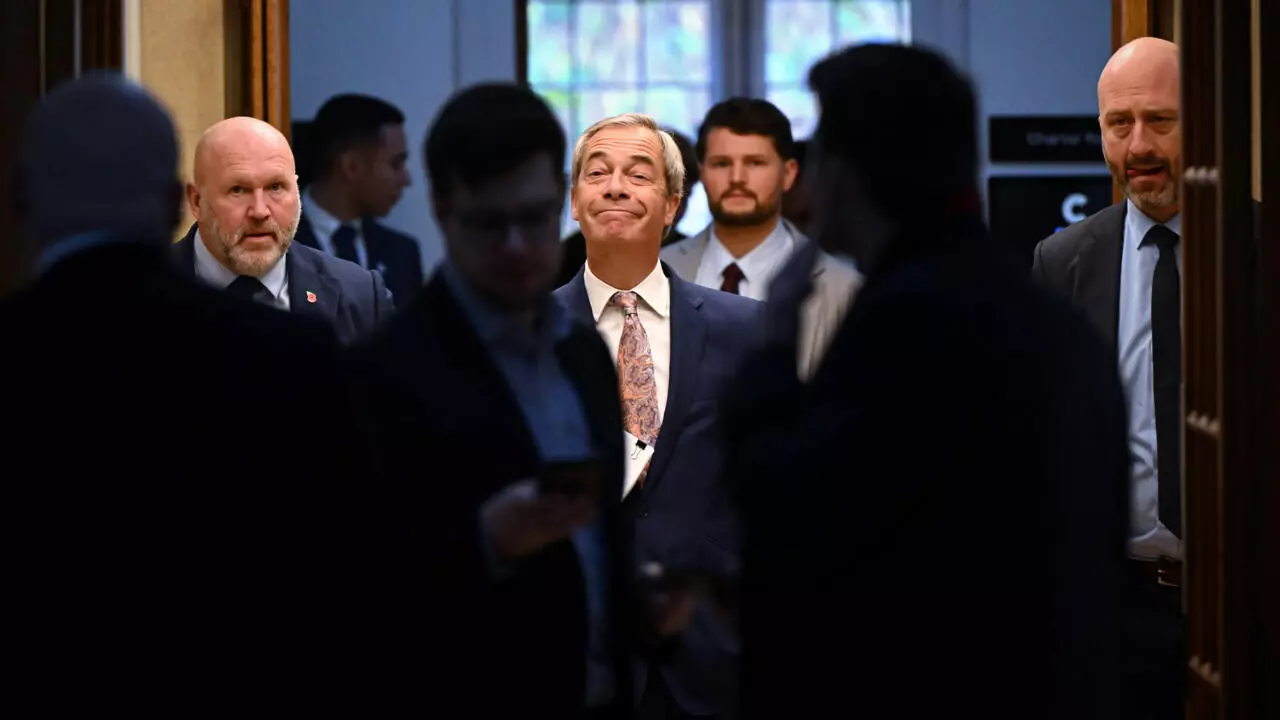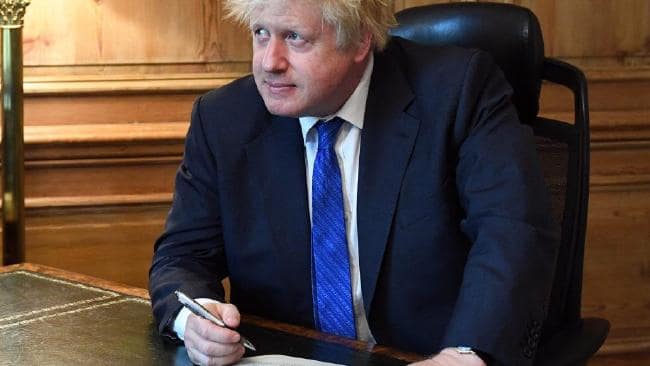
This article is more than
8 year old
UNTIL yesterday, Boris Johnson was one of the most influential members in the British Government.
That was until the precise moment he posed for this unbelievable picture - a candid shot of him grinning strangely as he signed his resignation letter where he told Prime Minister Theresa May the Brexit “dream was dying” and expressed his fears the UK would be reduced to “colony” status.
His departure, and that of another senior minister, has thrown the UK Government into turmoil.
The fact he allowed himself to be photographed as he did so has been widely slammed and ridiculed.

Mr Johnson hired photographer Andrew Parsons to capture the moment, The Sun reported, in what has drawn comparisons to President Trump’s staging of pictures - including where he simply signs documents.
Opposition MPs mocked him.
“Look at that guy Boris Johnson, he’s got a career ahead of him on Love Yourself Island. He’s the only politician in history who posed while signing his own resignation letter, that tells you everything you need to know about him,” deputy Labour leader Tom Watson said.
Another Labour MP, Wes Streeting, added: “It’s always all about Boris Johnson with him.”
A scathing old tweet from Mr Johnson’s former newspaper editor Max Hastings has also resurfaced.
Max Hastings on BorisJohnson in @thetimes today: pic.twitter.com/j3t7ZT0uFS
— Sean O'Neill (@TimesONeill) July 10, 2018
In his resignation letter, the one he is proudly pictured with, Mr Johnson accused Mrs May of surrendering to European Union negotiators as the UK plans to leave the bloc: “What is even more disturbing is this is our opening bid...It is as though we are sending our vanguard into battle with the white flags fluttering above them.”
Mr Johnson, a flamboyant former journalist and London Mayor, had taken issue with Mrs May’s proposal for the UK to leave the EU next year.
He feared it was a “soft” Brexit that betrayed the millions who voted to leave the EU and that would see the country still tied.
She replied tersely that she was “sorry and a little surprised” at his view considering he supported it just days earlier. She then added that it was “right that you should step down”.
Mrs May has faced a backlash over her plan for the UK when the country leaves the EU in March next year.
As well as Mr Johnson, Brexit Secretary David Davis quit her government and now there are calls for her to go as well.
No leadership challenge has emerged yet, but several British media reports suggest backbenchers could be waiting until President Trump has visited this week to deliver their demands she resign.
Mrs May has indicated she would fight any moves to blast her from Downing St.

HARD BREXIT VS SOFT BREXIT: WHAT IT MEANS
The current crisis has been threatening to explode for months, as Mrs May has fought with colleagues within her Conservative party and Cabinet as well as EU counterparts to chart a course for Britain post-Brexit.
Conservative politicians have been divided about what sort of Brexit to go for - a so called “soft Brexit” or a “hard Brexit”.
A hard Brexit is what is favoured by Brexit supporters. It would see the UK leave the single market and customs union when they leave the EU, meaning London would once again fully control its borders, stopping the flow of EU nationals, cut the money being sent to Brussels and mean the country could then negotiate its own trade deals.
The customs union includes EU states and others, like Turkey, and does not require free movement of people, being directly subject to the European Court of Justice (ECJ) or paying into the EU budget.
The downside is British goods and services would face tariffs and sectors like agriculture could lose protections from cheap imports.
A soft Brexit is that favoured by those who don’t want the country to leave the EU, or at least
want to retain some links. The UK would give up its seat on the European Council, but there could still be some sort of free movement of goods and services - and possibly people.
